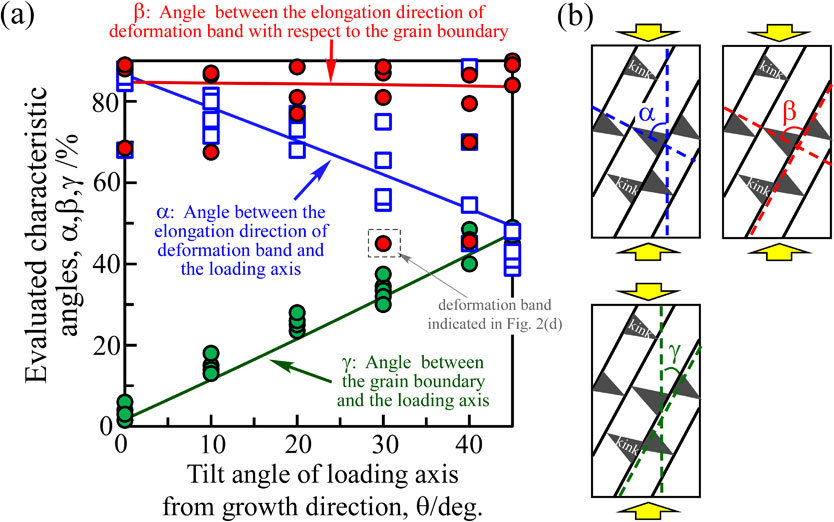Abstract
The variation in the deformation behavior of a directionally solidified (DS) Mg-based long-period stacking ordered (LPSO)-phase crystal depending on the loading orientation was examined. The frequency of formation of the beak-like shape of the deformation band, which is known as one of the important deformation mechanisms in the LPSO phase, monotonically decreased as the inclination angle of the loading orientation with respect to the crystal growth direction in the DS crystal increased, and was accompanied by a decrease in the yield stress due to the activation of basal slip. Deformation bands formed along a direction approximately perpendicular to the grain boundary independent of the loading orientation. The crystal rotation axes selected in the deformation bands were perpendicular to [0001] in almost all grains, independent of the loading orientation. However, the rotation axes in the bands were not fixed but varied between ⟨1010⟩ and ⟨1120⟩; this variation was correlated with the loading axis. These observed features strongly suggest that the deformation bands formed in the LPSO phase are predominantly deformation kink bands and that the formation mechanism itself does not vary with the loading orientation but instead its details. The selectivity of the crystal rotation axis in the kink band is strongly affected by the loading orientation.

Fig. 4 (a) Variations in the angle between the elongation direction of the deformation band with respect to the loading axis (α), the angle between the elongation direction of the deformation band with respect to the grain boundary (β), and the angle between the grain boundary and the loading axis observed on the specimen surface (γ). (b) Schematic showing the definitions of α, β, and γ.
Fullsize Image



